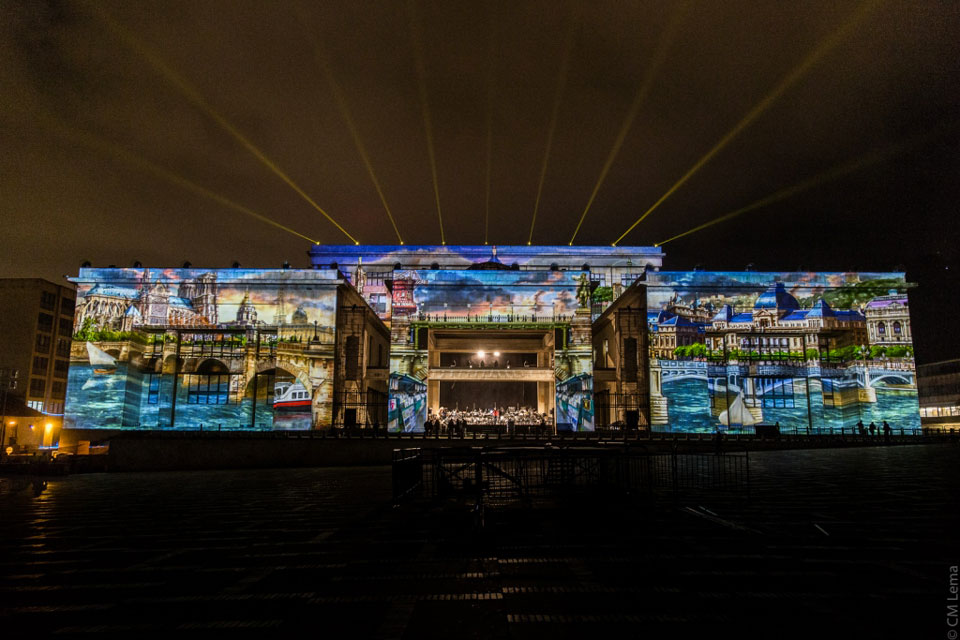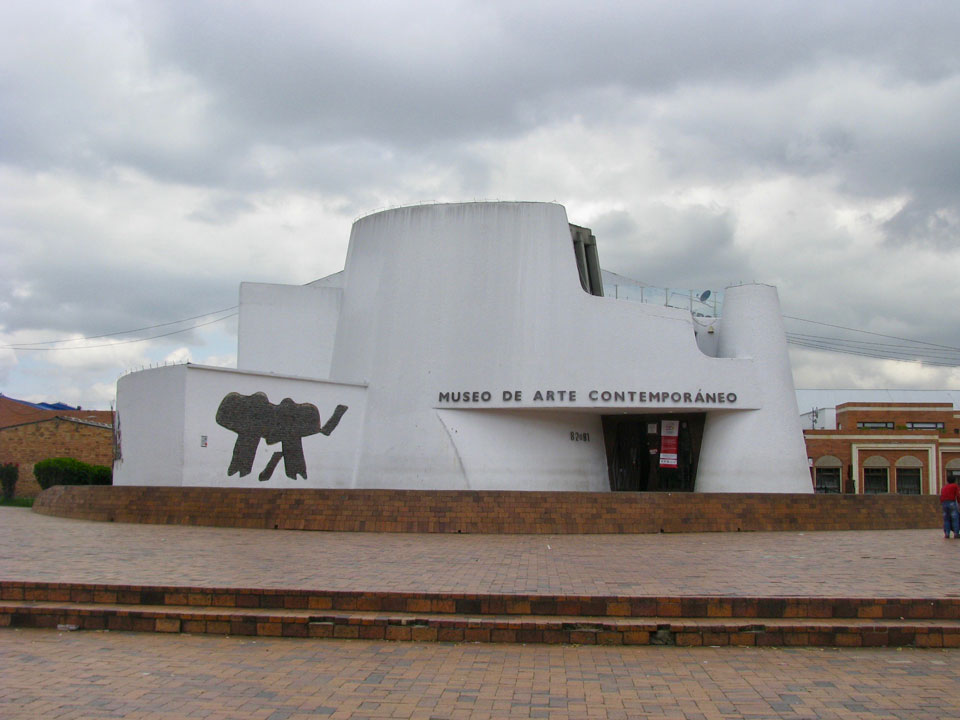
The Museo de Arte Contemporáneo de Bogotá and the Plaza Banderas. Photo: Chris Erb
A visit to Bogotá’s far-flung contemporary art museum reveals an interesting look at the working-class barrio of Minuto de Dios. Chris Erb and Eduardo Cote explore the surroundings.
Just north of Calle 80, near its car-choked meeting point with Avenida Boyacá, is the working-class neighbourhood of Minuto de Dios. To outsiders, Minuto de Dios may appear to be an odd name for a residential neighbourhood but to Colombians, it doesn’t seem the least bit strange, as it refers to a well-known religious group.
The charismatic Catholic organisation got its name from the one-minute radio spots (which moved to television in 1955) where its ‘telepadre’ Rafael García Herreros, a priest and leader of the sect, would discuss a specific religious topic for exactly one minute. The programme – which all Colombian television networks are required to broadcast – has continued uninterrupted after his death in 1992 and, after 61 years, has aired over 13,000 segments.
In the mid 1950s, García Herreros decided to devote some of his time to housing the poor who were flooding into Bogotá at a steady pace. He envisioned a community of people devoted to a moral and Christian lifestyle, living together in harmony. Construction started in an illegal slum but was stopped when the owner of the land went to court to halt construction. An important landowner and philanthropist named Antonio Restrepo Barco stepped in and donated the property where the current neighbourhood of nearly 3,000 households now stands.
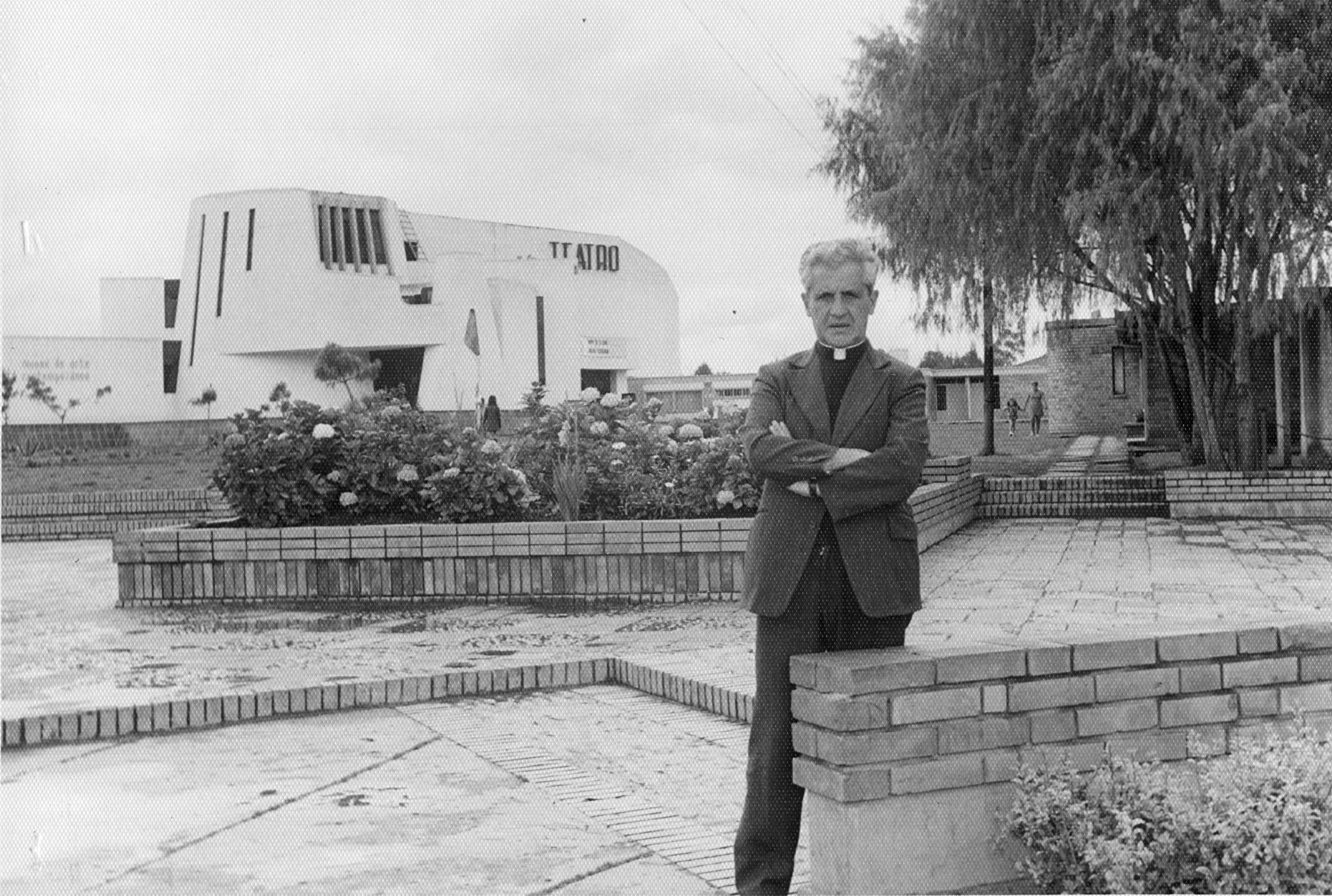
Padre Rafael Garcia Herreros in Plaza de banderas. Photo: Minuto de Dios
After starting construction on the current Minuto de Dios neighbourhood, the organisation raised a substantial sum of money by inviting the city’s elite to pay exorbitant amounts of money to attend a dinner – called the Banquete del Millón – at the Hotel Tequendama. Despite the A-list of guests which included the president and first lady, ambassadors and diplomats, business leaders, beauty queens and clergy members, only a simple meal of consommé and a piece of bread – a meal of the poor – was served. The dinner is held annually to this day to raise funds for new housing schemes.
For the most part, the finished neighbourhood resembles most other well-kept estrato tres areas of the city. A major and occasionally disconcerting difference, however, is the near omnipresence of the Minuto de Dios organisation.
A sharp eye isn’t needed to notice the Minuto de Dios logo – with its bold yellow “MD” with a stylised cross in the centre – plastered across practically every corner of the neighbourhood. It’s a logo that is commonly seen throughout Colombia but is, unsurprisingly, found absolutely everywhere here. Many of the tentacles of this massive organisation are scattered around the neighbourhood including its radio station, a clothing bank, a teaching hospital, a number of schools run by the organisation and the main campus of its university, UNIMINUTO.
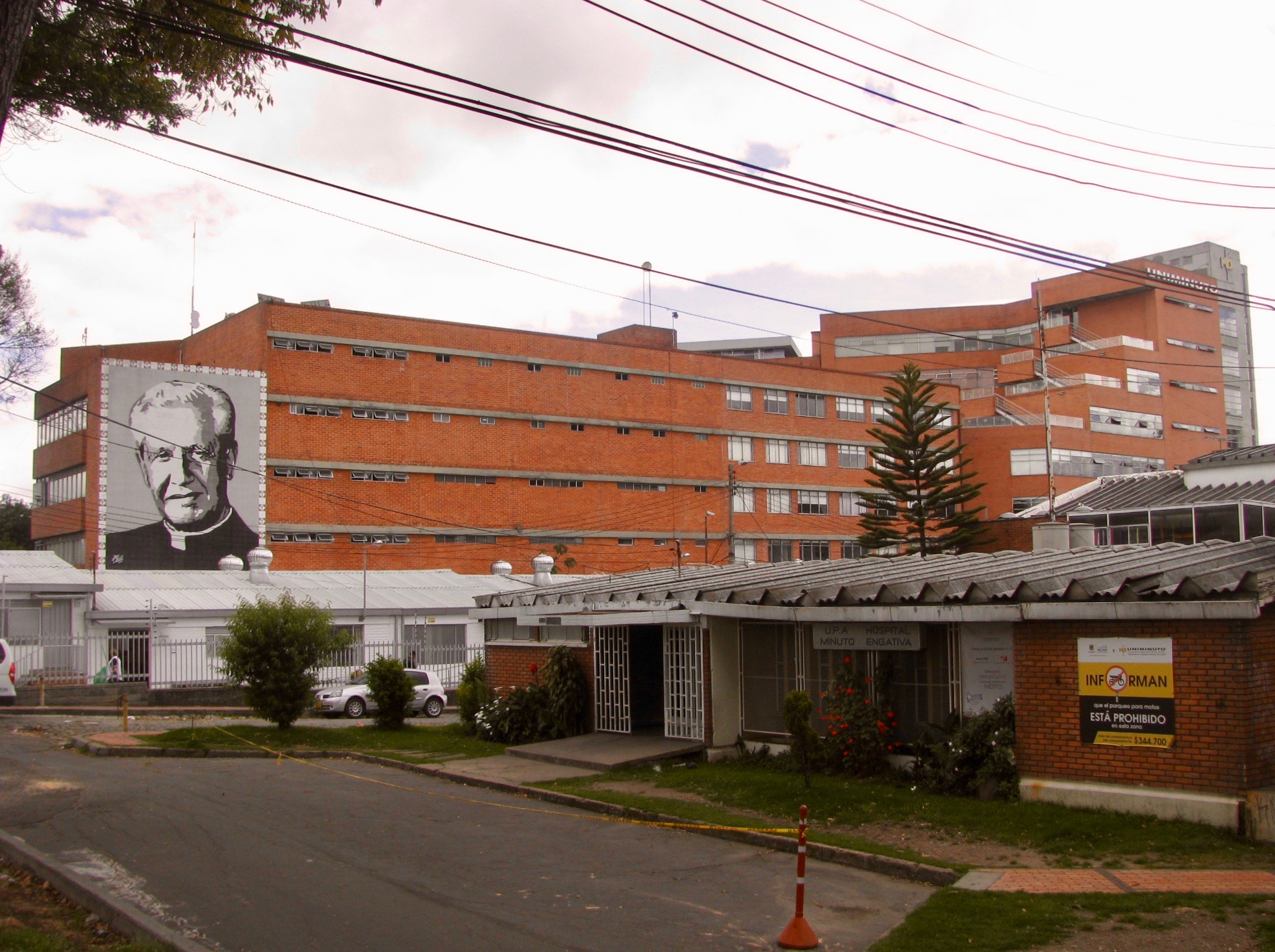
UNIMINUTO with homage to Padre Garcia. Photo: Chris Erb
The neighbourhood occasionally has a vaguely totalitarian feel with its large murals of García Herreros. The largest and most imposing, at about three storeys in height, haunts the wall of the principal building of the UNIMINUTO campus.
Surprisingly, the centrepiece of the neighbourhood isn’t a church, but a museum. Overlooking the main plaza, on Carrera 73a just north of Calle 81a, is an unusual white building, reminiscent of Frank Lloyd Wright’s Guggenheim Museum in New York City (a 1999 El Tiempo headline described it as the “Guggenheim Criollo” in a profile of the building’s architecture).
This is the Museo de Arte Contemporáneo de Bogotá. Typically, such an institution would be found in the centre of a city like most of the other cultural spaces in Bogotá. However, García Herreros envisioned a modern museum right in the middle of his working class neighbourhood.
Designed by architects Jairo López and Eduardo del Valle and completed in 1966, the “MAC” is the only museum in the locality of Engativá. Surrounding the museum, in the Plaza de Banderas, are 26 sculptures by different artists, as well as a mural carved into the building at the main entrance by Colombian artist Manuel Hernández. As to be expected, the requisite mural of García Herreros is present on a wall at the north side of the plaza.
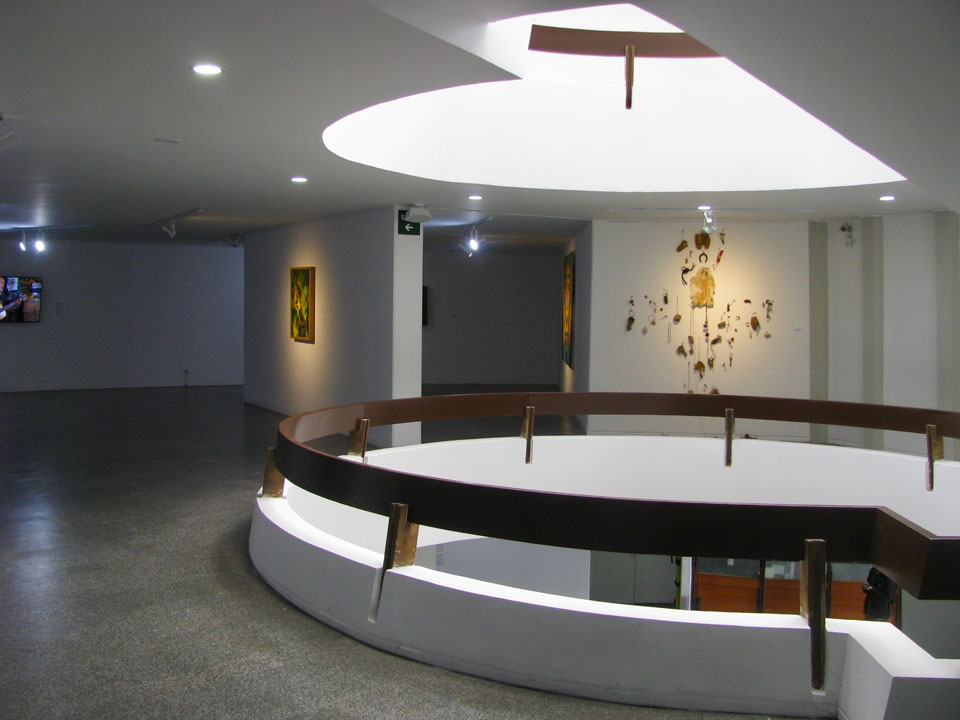
Inside the MAC. Photo: Eduardo Cote
While the museum is small in size, it has hosted works from numerous artists from around Colombia and beyond. It’s also only the second museum outside of the US to be recognised by the Alianza Americana de Museos and the building itself won the Premio Nacional de Arquitectura in 1971 as well as la Orden al Mérito Civil José Acevedo y Gómez from the Bogotá city council in 2006.
Minuto de Dios was built in a total of eight phases between 1957 and 1972. Because each sector had its own distinctive design, it’s still possible to tell the difference between each one as you walk through the neighbourhood. The oldest part, Sector 1, was finished in 1958 and each modest house had a small garden at the front, although very few now remain. A total of 70 houses were built and when the residents were given their homes, they also received a set of regulations such as rearing well-bathed children, regularly attending mass and abstinence from alcohol by the head of the household. Failure to follow the rules would mean having to find a new place to live.
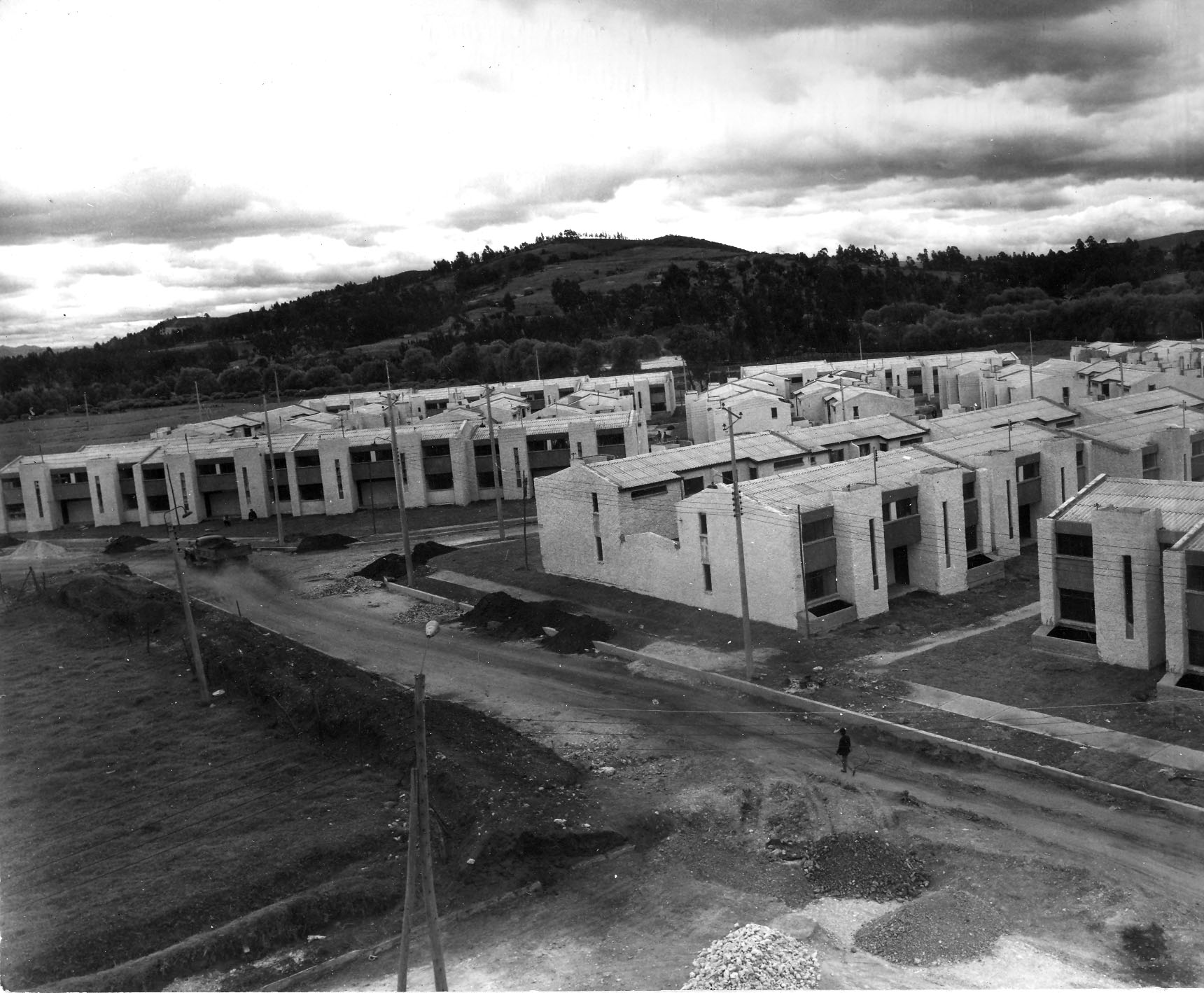
Construction of Minuto de Dios. Photo: Minuto de Dios
Sector 4, built between 1966 and 1967, features cosy two-storey brick houses. However, when built, it was considered the worst part of the neighbourhood as it often suffered flooding and muddy streets due to the adjacent Río Juan Amarillo.
Over the next two years, Sector 5 was conceived as the most affluent area with larger and nicer houses, causing a social divide between the existing residents and the newcomers. Taking a walk down its quiet narrow streets, one can still see some of the characteristic red roofs and modest front and back yards. Unfortunately, many have since been converted to parking spaces.
The final phase, Sector 8, was inaugurated in 1972 by then-president Misael Pastrana Borrero and is the most characteristic of the neighbourhood due to the somewhat peculiar modernist architecture of the buildings. The white boxy houses, separated by small and well-kept parks, are the best preserved and are unusual in that they share a common entrance for every two houses.
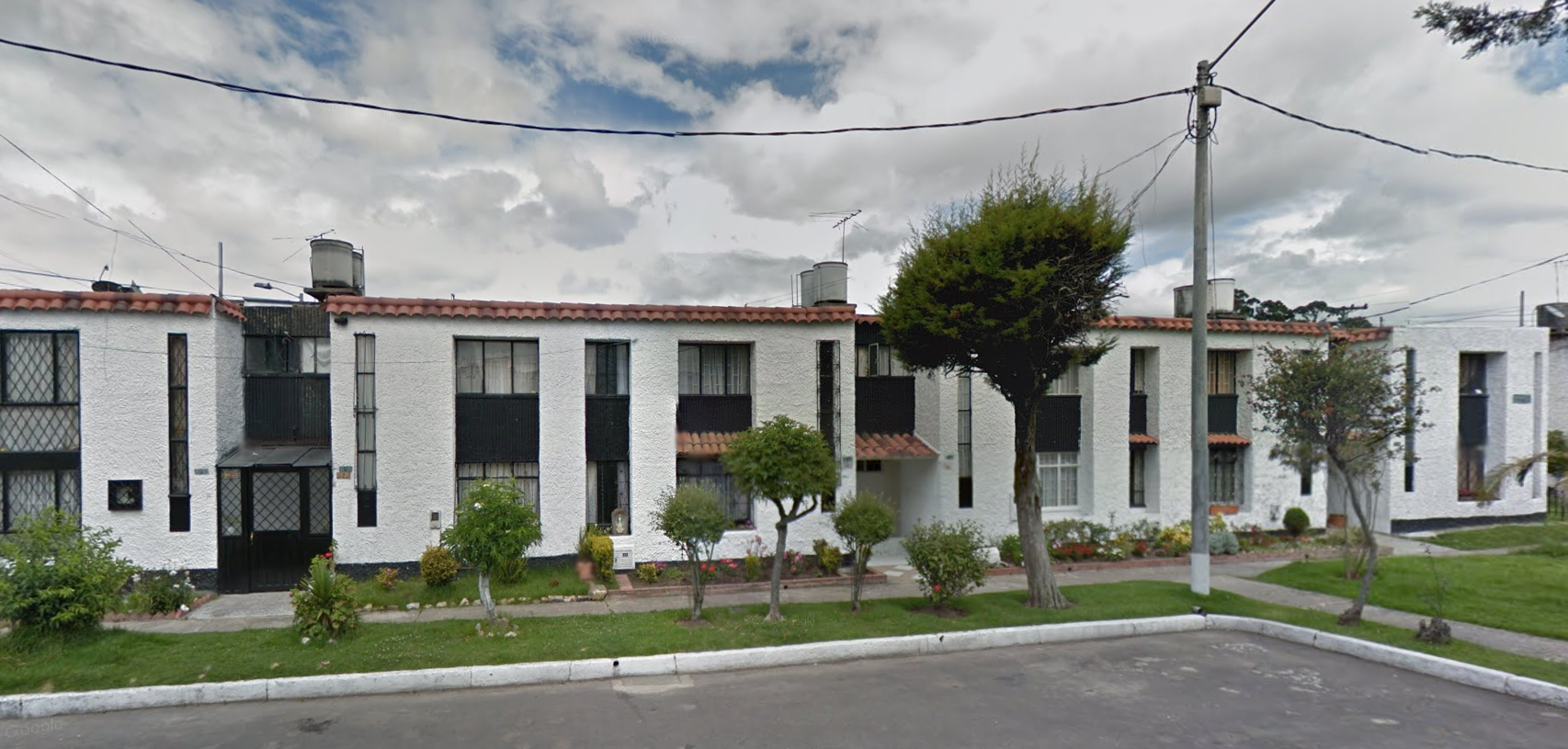
Sector 8 houses. Photo: Google
Nowadays, little is left of the model ‘comunidad cristiana’. In fact, a recent study showed that the majority of the residents do not participate in, nor are even aware of community activities hosted by the church or its university.
At first glance, Minuto de Dios may look and feel like a typical working class neighbourhood. However, a closer look reveals a much different place. From its museum and other cultural spaces, to the remnants of its planned residential architecture, this is a neighbourhood that deserves further attention to appreciate García Herreros’s dream of building a true ‘ensayo de comunidad cristiana’ for his many followers.



